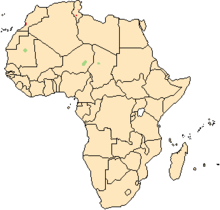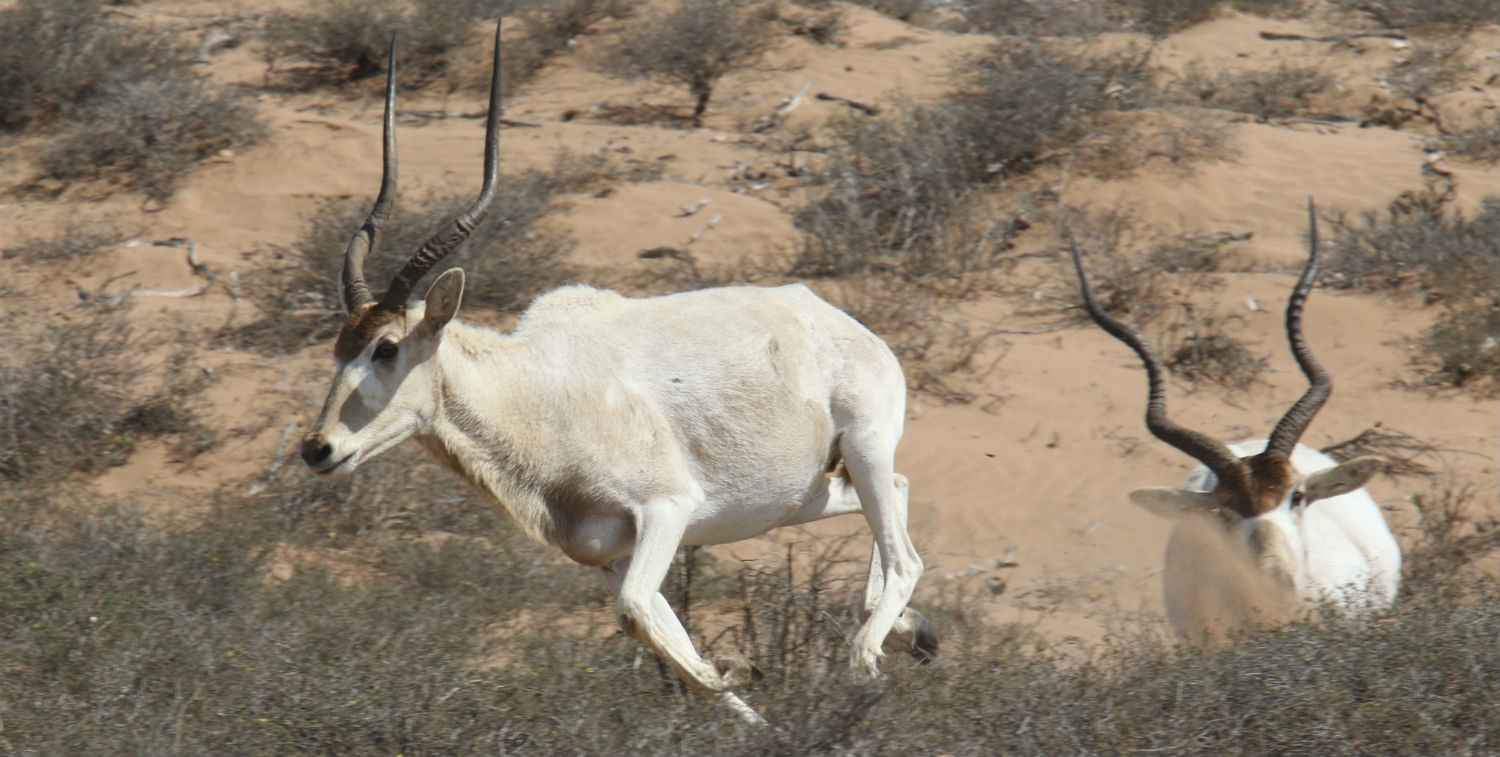The Addax: Endangered Animals Blog
Species Description
The Addax, commonly called the White Antelope or even the Screwhorn Antelope is home to the Sahara Desert. Recognizable by its incredibly long and twisted horns, the Addax are sexually dimorphic, with the females standing at around 105 to 115 cm, compared to the females' 95 to 110 average height. This species is currently classified as critically endangered, with only around 100 animals remaining in the wild and around several thousand in captivity (numbers vary).

Habitat and Range
The Addax species typically inhabit dry/arid regions, found most commonly in deserts (semi, sand, and stony) In the past, the Addax populated the Sahelo-Saharan region of Africa and were spread across the Sahara Desert, but are now subjugated in the Termit Massif Reserve in Niger. While some exceptions occur, like some sightings in the eastern Air Mountains in Niger and Bodele in Chad, these are rare occurrences.

Ecological Role
The Addax are grazers and browsers and serve significant roles in habitats. Typically, their diet consists of shrubs and leguminous herbs or leaves of Acacia trees. Furthermore, the Addax commonly serve as prey for carnivores, such as (but not limited to) lions, leopards, and cheetahs.

Causes of Decline
Since the mid-1800s, declines in the population of the Addax species, have been consistent and have forced the majority of the species to survive in captivity.
1. Overhunting: Due to their slow movements, Addaxes decreased in numbers when they were hunted from Algeria to Sudan. Their highly prized leather and meat have been motivating factors toward to overhunting of this species.
2. Chronic Droughts: Climate change combined with other environmental factors, have made chronic droughts more common in the places where Addaxes live, causing them to decrease in numbers.
3. Habitat Destruction: Due to increased human settlement and agricultural expansion efforts, the Addax species has been tragically harmed by their loss of a home.

Why We Should Care
The drastic reduction in the Addax species has been highly critical to the environment in which they are native. This species may not actively hunt prey or keep another species in check, but they do serve as prey for other carnivorous species that are also in decreasing numbers. The presence of the Addax is crucial in the environment to maintain a stable level of biodiversity.

Current Conservation Efforts
To prevent the loss of even more animals in the wild, several protective measures have been taken including ensuring effective protection from poaching at crucial sites. Similarly, efforts have been taken to protect the Addaxes' habitats by establishing protected zones for them. While protecting their habitats and fighting off poaching are some of the reform efforts being taken, several others exist, including attempts to encourage breeding in an attempt to protect their irreplaceable genetic material that consists of a wide genetic diversity, not currently represented in the global population.

Role of Geographers and Geospatial Tools
Both geographers and Geospatial tools can play a pivotal role in conservation and rehabilitation efforts for this unique species. By providing migration patterns and the distribution of the Addax species, these resources can outline the areas that need to be protected the most. Similarly, they can provide insight into habitat conditions before any major harmful events occur, as habitat loss is one of the major factors that lower the numbers of Addaxes.

How We Can Help
1. Donating Funds: By providing monetary donations, organizations can have the ability to take the steps needed to protect endangered species, such as the Addax, and their habitats.
2. Volunteering: Providing your time and effort to the environment can have long-lasting impacts and is a positive step toward protecting the Earth.
3. Raising Awareness: Posting on social media or even educating your friends and family members can go a long way in protecting endangered species.
4. Sustainable Products: Instead of using plastic or other single-use items, consider switching to reusable products or buying items from companies that pledge to help the environment.
5. Practice Sustainability: Switching over to eco-friendly transportation methods, recycling items and goods, and even saying "No thanks" to a plastic bag, all help the environment live!

HELP THE ADDAX!! :)
Comments
Post a Comment